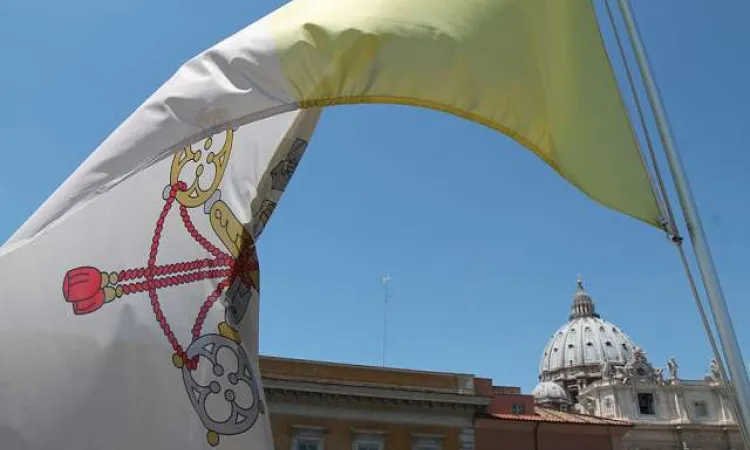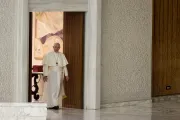Di Ruzza was not renewed in his mandate as director of the AIF, which expired in January, after earning praise for the Vatican's financial structures from international monitoring agencies.
None of the people investigated have yet been charged. The investigation is still in the preliminary phase. Rumors say Tirabassi has yet to be questioned.
The institutional crisis and the players at stake
All these details show that we are not talking about a mere financial scandal, but rather a particularly severe institutional crisis. It seems to be an attack on the institution from within the institution.
On the one hand, there is the IOR.
The Institute for Religious Works recently reformed its statute and has focused heavily on ethical finance. The financial investments of the IOR have always met certain specific criteria, and since the mid-1990s, the Institute has subjected the financial statements to an external review.
The IOR balance sheet is not terribly healthy.
They range from the profit of €86.6 million declared for 2012 – which quadrupled the earnings of the previous year – to €66.9 million in the 2013 report, to €69.3 million in the 2014 report, to €16.1 million in the 2015 report , to €33 million in the 2016 report and €31.9 million in the 2017 report, to reach €17.5 million this year.
This is the fault of market trends, and also of the expensive external consultants who have been brought in to help craft Institute's policies. For some time, draws were made on reserves, which gradually dwindled. The IOR could undoubtedly benefit from the obligation to allocate institutional investments to the Institute, which is what is being contested by the Secretariat of State.
It should be noted, however, that the latest IOR report certifies that the liquidity deposited by asset management has decreased by €47.3 million.
This drop in liquidity, which corresponds to a decline in customers, "is attributable to the withdrawals by some customers for their institutional activities," explained the general director Gianfranco Mammì. Does this mean that the IOR is no longer considered attractive for institutional activities even by religious congregations?
On the other hand, in recent years, the IOR has carried out a series of complaints and trials against former managers, establishing a subcommittee for past offenses closed in 2017 and working to build a narrative based on the idea that the IOR is cleaned up and rejuvenated.
There are ongoing or appeal proceedings, which in some cases raise doubts about the very possibility of the people under investigation to carry out operations without the consent of the Institute's top management.
One of these proceedings concerns a real estate sale in Hungary through a company based in Malta: the lawyers of the same company have raised the suspicion that the IOR is pursuing the procedure precisely to discredit the work done in the past. Again, justice will take its course.
The Financial Intelligence Authority
On the other hand, it was thanks to the AIF that Angelo Proietti was sentenced guilty for money laundering and that light was shed on banker Giampietro Nattino, who made himself the screen of the IOR and the APSA. These are cases of which the Institute''s publicity never speaks.
The Financial Intelligence Authority has played a crucial role in developing the international credibility of the Holy See. From joining the Egmont Group, which brings together over 140 intelligence authorities from around the world, to building and strengthening the Vatican's anti-money laundering system, the Financial Intelligence Authority has been recognized as a reliable partner in both its intelligence and supervisory functions.
The latest annual report of the Authority listed 56 memoranda of understanding signed with its counterparts in the field of information and eight memoranda of understanding in its supervisory function. Among these, the Italian Financial Information Unit and the Bank of Italy testify to a well-crafted and well-performing bilateral relationship.
Information exchange with Financial Intelligence Units worldwide has also made AIF a privileged interlocutor. The latest report shows that the AIF has exchanged information with foreign FIUs 473 times, while 158 spontaneous communications have been transmitted to foreign Financial Information Units, and 15 have been received.
The financial information and money laundering prevention system set up by the AIF, with the series of regulations issued, had given the Holy See the technical requirements for entering the Single Euro Payments Area (SEPA).
This workload is based on relationships of trust characterized by the necessary confidentiality of intelligence, as well as on a well-built and properly functional legal system.
The Vatican Tribunal
In its latest 2017 progress report, the Council of Europe's MONEYVAL committee praised both the anti-money laundering system and the establishment of financial crime section in the court, but also said the court needs to conduct more prosecutions.
The next Moneyval report will look at how well paper reforms are really being implemented, especially insofar as the tribunal is concernedThe Vatican court has always contested this accusation of ineffectiveness, as well as the idea that the court is the weak link in the system.
The day after the news of the searches, the appointment of Giuseppe Pignatone as president of the Vatican Tribunal was announced. Known for his anti-mafia investigations, Pignatone thus goes from being a prosecutor to being a judge. He is retired from the Italian judiciary system, which means he will be able to work full time for the Vatican Tribunal.
However, he came into the Vatican with the knowledge of the Italian code, not of the Vatican code. The Vatican took over the Italian 19th-century Zanardelli code, a liberal code adapted to modern times with a reform of Pope Francis in July 2013. It is different from the Rocco code in force in Italy, which was drawn up under fascism and rejected by the Holy See.
Before Giuseppe Dalla Torre presided the Vatican tribunal, Dalla Torre is a profound connoisseur of the Vatican particularities in criminal and canon law. Now, the appointment of Pignatone also suggests a loss of the Vatican "exception", and a State that conforms to Italy goes against the international accreditation work that has been done so far, first with Benedict XVI and then with Pope Francis.
What scenarios in the Secretariat of State?
Are we going back to the times when the Vatican modeled itself on the Italian State? Maybe it's too early to draw conclusions.
It should be noted that everything began to come to light when Archbishop Edgar Pena Parra began working and reshuffling the ranks of the Vatican Secretariat of State.
An Italian had always led the administration of the Secretariat of State.
Monsignor Alberto Perlasca led the office for ten years. In 2019, he was appointed Deputy Promoter of Justice at the Supreme Tribunal of the Apostolic Signatura. The new head of the administration is Monsignor Rolandas Makrickas, a Lithuanian, who recently arrived at the Secretariat of State after serving at the nunciature in Washington. It is the first time that a non-Italian had led the administration of the Secretariat of State, which already had frictions with the Secretariat for Economy when it seemed the new economy outfit wanted to take control of all the Vatican finances.
The risk of returning to old balances seems strong in this moment, the very one in which the Secretariat of State has regained a central role; the Secretariat for the Economy has seen a well-defined separation between supervision and administration with the motu proprio "Temporal goods" of 2016, and the Auditor's office has been better inserted among the bodies of Curia.
The desire for a reversal has been there ever since Benedict XVI initiated the reform process with the Monetary Convention with the European Union of 2009.
The IOR's complaint has exposed an institutional wound that will be difficult to explain internationally. All the credibility and financial strength that the Holy See has acquired in these ten years could be at risk.
2 – continue
This is the second of a series of three pieces dedicated to the Vatican finances. The first piece of the series can be found here.



